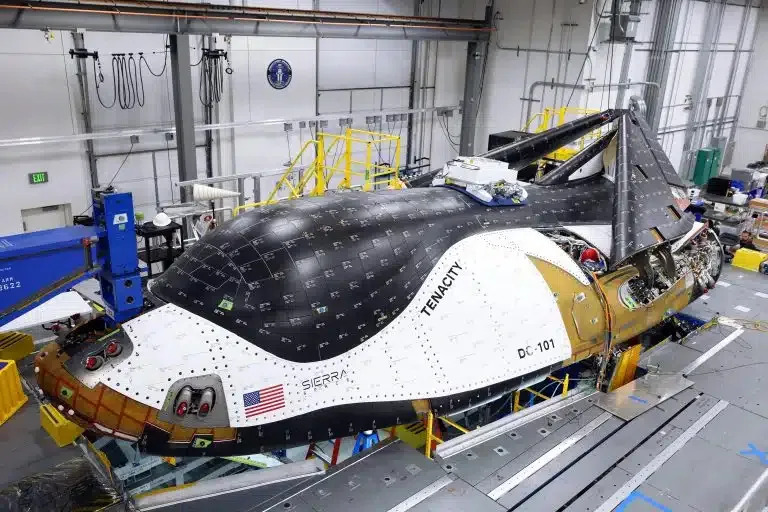NASA is on the cusp of commencing tests for what’s being hailed as the world’s inaugural commercial spaceplane capable of orbital flight, intended for resupplying the International Space Station (ISS). The space agency is preparing to receive Sierra Space’s first Dream Chaser, offering an alternative to SpaceX’s spacecraft for ISS missions.
In the upcoming weeks, the spaceplane, currently located at Sierra Space’s facility in Colorado, will journey to a NASA test site in Ohio. There, the vehicle, named “Tenacity,” will undergo extensive testing lasting between one and three months. This testing regimen, as reported by Ars Technica, encompasses vibration, acoustic, and temperature trials to ensure Tenacity can endure the rigorous conditions of a rocket launch. A team comprising NASA engineers, government experts, and contractor personnel will conduct these tests to certify Tenacity’s safety for approaching the ISS.
If all goes according to plan, Tenacity is slated for its maiden space voyage in April aboard the second flight of the United Launch Alliance’s Vulcan rocket. The rocket itself has yet to undergo its initial test flight, which is currently expected in December. However, given the uncertainties of spaceflight, delays are always a possibility on both fronts.
Notably, the spaceplane is equipped with foldable wings that enable it to fit within the rocket’s payload. On its debut mission, Tenacity is scheduled for a 45-day stay at the ISS, and upon its return to Earth, it will land at the Kennedy Space Center’s former space shuttle landing strip in Florida, rather than splashing down into the ocean, which is the norm for many spacecraft. Sierra asserts that the Dream Chaser is capable of landing on any suitable commercial runway.
Sierra Space CEO Tom Vice commented on this approach, stating, “Plunging into the ocean is awful. Landing on a runway is really nice.” The company asserts that Dream Chaser can transport cargo back to Earth at less than 1.5 Gs, a crucial factor in safeguarding sensitive payloads. The spaceplane boasts a capacity to carry up to 12,000 pounds of cargo to the ISS and bring back approximately 4,000 pounds to solid ground. Sierra’s long-term plans involve making the Dream Chaser fleet capable of transporting humans to low-Earth orbit as well.
As it stands, SpaceX is the sole company operating fully certified spacecraft for NASA missions. Boeing secured a contract for capsule development with NASA in 2014, but its Starliner capsule has yet to transport astronauts to the ISS. Sierra Nevada, the parent company from which Sierra Space emerged in 2021, previously vied with these entities for NASA commercial crew program contracts but was not selected. However, after refocusing the Dream Chaser on cargo missions for the time being, Sierra was chosen by NASA to join its roster of cargo transportation providers in 2016.
The journey to Dream Chaser’s inaugural ISS mission has been long in the making, originally slated for 2019 but beset by delays, compounded by COVID-19-related disruptions in the supply chain for essential components, prompting Sierra Space to take more construction in-house. The company now aims to introduce a second, human-rated version of the Dream Chaser by around 2026.
NASA’s interest in spaceplanes has persisted for many years, and it seems closer than ever to realizing this aspiration. While Virgin Galactic employs spaceplanes for tourist and research flights, they are limited to suborbital operations. Sierra, with its Dream Chaser, has set its sights higher.




